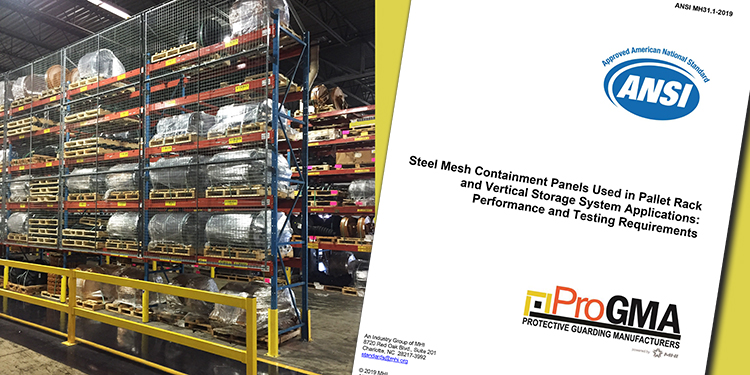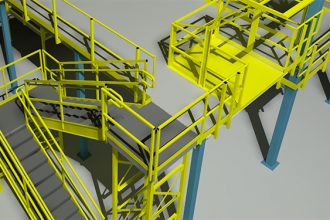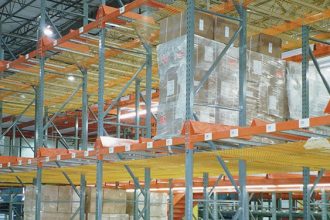New Standard For Steel Mesh Containment Panels Used In Pallet Rack Applications Released

Steel mesh containment panels — also referred to as rack safety panels, rack guarding, or rack back — are attached to the uprights, backs and sides of individual industrial steel pallet racks and vertical storage systems. When properly secured, these panels contain and reduce the potential for items stored overhead to fall and potentially strike pedestrians or equipment below. They can also be deployed to guard and secure automated systems used within the racking, such as automated storage and retrieval systems (AS/RS) including cranes and shuttles. Ultimately, the use of these panels protects personnel, products, and property.
To help owners, users, designers, purchasers, or specifiers of these types of products, the members of the Protective Guarding Manufacturers Association (ProGMA), recently published a new standard, “ANSI MH31.1 – Steel Mesh Containment Panels Used In Vertical Storage System Applications: Performance and Testing Requirements,” available for purchase. The standard provides both guidance and information about design, operating, and testing practices, as well as performance criteria and operational requirements. It is intended to help interested parties as they are determining the optimal way to use these panels in their operations.
As stated in the standard, the goal of the recommended testing process “is to apply a quantifiable impact load at both the geometric center and an offset quadrant of a steel wire mesh containment panel and indicate wire or weld failure, if they occur. Deflection of the mesh during impact is also quantifiable in a risk assessment.” To achieve this objective, the evaluation procedure specifies the dimensions of the panel for testing, as well as the use of a pendulum to apply an impact force. The resulting amount of deflection (the degree to which the mesh structure is displaced by the impact load) and deformation (any changes in the shape of the mesh as a result of the impact) at both the center of the panel and in an offset location are to be replicated at least twice.
The results of the testing can be used to determine one (or more) of the following in a field installation:
- If the maximum dynamic deflection from the impact load could cause the mesh panel to encroach into an aisle to such a degree that it exceeds the maximum aisle safety width.
- If actual impact conditions — such as sustained energy, materials other than steel, or impacts to areas outside the panel’s center — might produce different results.
- If the resulting maximum dynamic deflection of a containment panel could make contact with the containment panel of an adjacent rack in a back-to-back rack installation.
- If the impact could cause the panel’s mounting hardware to become disconnected or disengaged from the rack, the panel, or both.
Additionally, ANSI MH31.1 offers guidance for considering the results of the testing in accordance with the National Fire Protection Association’s NFPA 13, Standard for the Installation of Sprinkler Systems, which call for a horizontal gap between the back sides of back-to-back rack and shelving systems.
Thinking of installing steel mesh containment panels in your racking structures? Learn more about key considerations when specifying these rack accessories, here.



